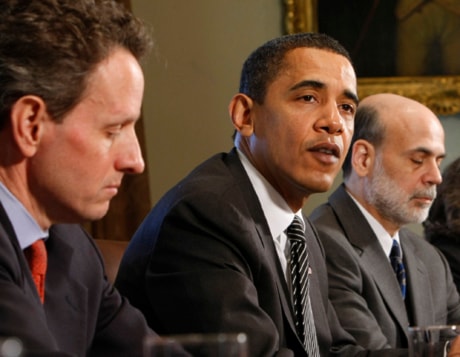TORONTO — A U.S. government plan to buy up toxic banking assets and provide a boost to lending could rejuvenate both the American and Canadian economies, according to economists and banking industry observers.
But they also cautioned Monday that it’s still too early to judge the effectiveness of the Obama administration’s plan, which calls for the U.S. government and the private sector to buy up to US$1 trillion worth of bad debt on the books of American banks.
Prime Minister Stephen Harper has said recently that a recovery in the Canadian economy can’t occur until the U.S. banking system also picks itself up, and lending to Canadian businesses and consumers is rebooted.
However, TD Bank chief economist Don Drummond remained cautiously optimistic about the plan’s overall impact on the economies in both countries.
“I don’t think you can necessarily break out the champagne and say it’s going to work,” Drummond said, while also noting that the toxic asset plan was “the missing ingredient and now at least we have something in that space.”
Drummond said he believes several steps are required to save the Canadian economy including: the bottom of the U.S. housing market, which he thinks is near; faster stimulation from monetary authorities; and larger government stimulus packages.
After it’s all in place, the ball will start rolling for a recovery, he suggested.
On Monday, U.S. Treasury Secretary Timothy Geithner unveiled the government’s plan, which will draw upon and bolster an existing $700-billion rescue package for the financial system.
The bad debts have weighed down the U.S. banking sector and made many financial services companies reluctant or unable to lend, reducing the ability of businesses and consumers to borrow.
The plan would break a transaction amount into fractions. For example, if $100 in bad mortgages was bought from a bank the private sector would pay $7, the government would match the $7, and then the other $86 would be paid for through a government loan provided in many cases by the Federal Deposit Insurance Corp.
